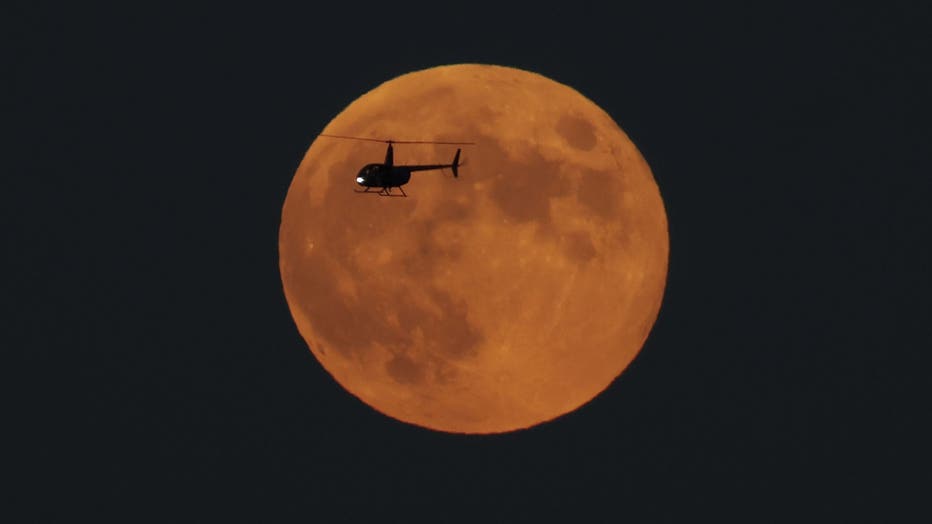Full moon October 2024: When, how to see this week's Hunter’s Moon
Micromoon vs. Supermoon: Stunning video compares the two
Filmed from the mountains of Colorado, a videographer shows the difference between micromoon and supermoon events.
October’s full Moon is often known as the Hunter’s Moon, and this year’s happens when our celestial neighbor is closest, earning Supermoon status.
Full moon October 2024: When to see it?
The upcoming full Moon happens on Thursday at 7:26 a.m. EDT, according to NASA.
JUMP TO: NORTHERN LIGHTS
The Moon will be below the horizon, so you'll have to wait until after sunset Thursday evening to see it. The good news is that the Moon will appear full from Tuesday evening through Friday morning.

FILE - A helicopter flies in front of the full Hunters Moon as it rises above New York City on October 28, 2023, as seen from Jersey City, New Jersey. (Photo by Gary Hershorn/Getty Images)
October’s full Moon is a Supermoon because it happens during perigee, the Moon’s closest distance to Earth.
The Moon reaches its closest distance to Earth on the night of Oct. 16 and becomes a full Moon on the morning of Oct. 17.
According to NASA’s Gordon Johnston, it's the third of four consecutive Supermoons and will be the brightest, but only by a tiny margin. The next full Moon, known as the Beaver Moon, will also be a Supermoon on Nov. 15.
What is the Hunter’s Moon?
The Hunter’s Moon happens after September’s Harvest Moon, according to the Farmer’s Almanac, and there have been records of the name dating back to 1710.
Unlike the other full Moon names of the year, the Harvest and Hunter's Moon are named for the time of year instead of associated with the month.
Northern Lights New York
Meanwhile, New Yorkers were treated to a celestial spectacle on Thursday night as the aurora borealis, also known as the northern lights, danced above the city’s skyline.
Aurora borealis lights up NYC skies
Skies across the northeast were lit up by a rare aurora borealis on Thursday night thanks a geomagnetic storm, delighting stargazers.
A powerful geomagnetic storm from the sun triggered the typically elusive event, much to the delight of stargazers across the tri-state area. The aurora was also reportedly visible across several northern states and even parts of the Midwest.
The phenomenon is caused by disturbances in Earth’s magnetosphere, in this case, triggered by a coronal mass ejection (CME) from the Sun.
FOX Weather helped contribute to this report.

